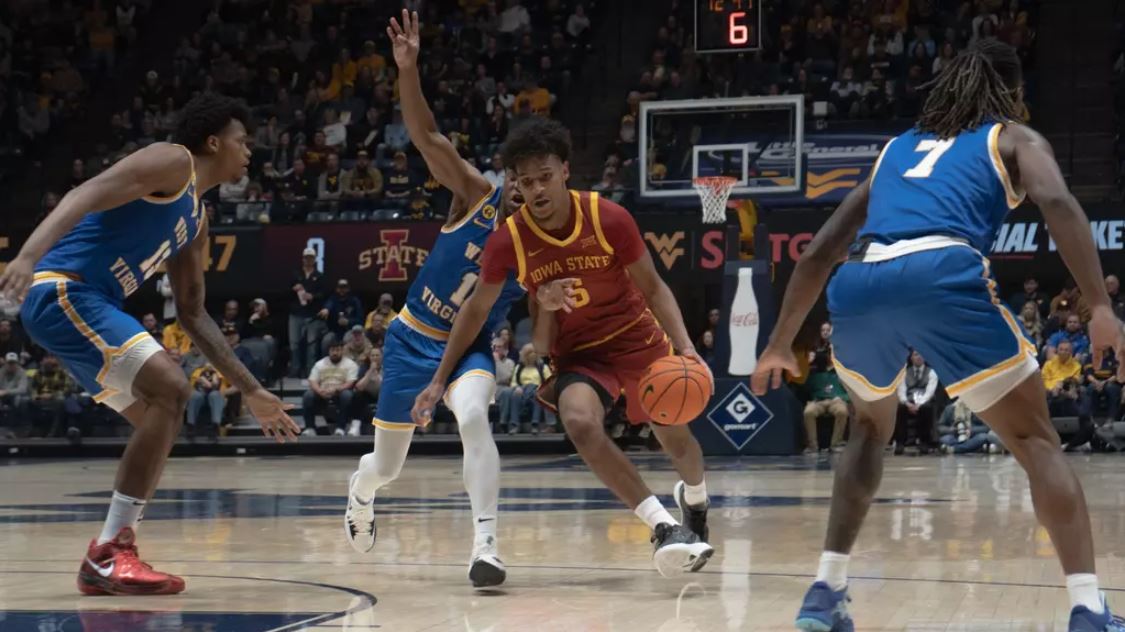When it’s over
April 23, 2007
Editor’s note: This is the first in a three-part series detailing the struggles female student-athletes face as they journey through four years of college athletics toward the end of their playing careers.
8:01. 8:00 . 7:59. Time rapidly ticks away for the ISU women’s basketball team in round two of the NCAA tournament. It trails Georgia by 27, and as the inevitable season-ending loss draws closer with every tick, senior Megan Ronhovde finally understands. When the clock reaches 00:00, it won’t just be the end of the game or even her season – but the end of her career.
“I was just looking up at all the fans that we had there, and at that moment it was finally hitting home that this is it – the last seven minutes that I’m ever going to play,” Ronhovde said.
When the final seven minutes of her career had painfully drained away, she walked off the court and gave a final wave to the cheering Cyclone fans. But while they cheered, she cried.
“It’s so difficult to say that it’s completely over,” Ronhovde said. “I’m never going to get to put on the Iowa State jersey again and I’m never going to get to run out to the fight song coming out of our locker at Hilton.”
Ronhovde is just one of many senior female athletes at Iowa State who go through the same heart-wrenching realization – that no matter how hard they worked for the past 20-some years, they are finished. Quite simply, the opportunities following college for female athletes to continue their career’s are few and far between.
“There is no professional level beyond [college],” said ISU gymnastics coach Jay Ronayne of female sports.
“If there are some sports that have it, you’re only going to get so much. It’s not like these million dollar contracts are sitting out there.”
Of the six men’s sports at Iowa State, two of them – basketball and football – feed directly into the NBA and NFL. For the men in these sports, there is no shortage of motivation to strive to be the best you can be. If you perform well, it’s on to the high-paying professional level to continue your career.
There are 10 women’s sports at Iowa State, but even in women’s basketball, the only female sport with a professional league following college, the WNBA just doesn’t have the same draw the NBA and NFL create.
“To be honest with you, for most of our players, the [WNBA] is not something they think about,” said ISU women’s basketball coach Bill Fennelly. “I think if you ask Greg [McDermott], almost every guy he recruits talks about playing in the NBA. I can honestly tell you one out of 10 of the kids we recruit, consciously ask questions about, ‘OK, how are you going to help get me into the WNBA?'”
According to the National Football League Players Association, the average salary for an NFL player in 2005 was $1.4 million and according to the National Basketball Players Association, the average salary of an NBA player in 2005 was almost $4 million.
The average salary for a player in the WNBA in 2005 was $46,000 according to the Women’s National Basketball Players Association.
“[The WNBA] is an avenue beyond college to allow them to keep doing something they are good at, something they love,” Fennelly said.
“But I don’t think that it is something that drives them like it does for some of the men’s players, because it’s just not the same – bottom line is economically it is nothing special.”
With no place to go, and no league to strive for following college, female athletes could be left wondering why they commit so much time and energy to improve themselves as an athlete. The question becomes, where do they find a source of motivation?
“I knew coming in to Iowa State that I wanted to play at the top level, because I knew it would be the last four years I could play softball,” said freshman ISU softball player Courtney Wray.
“So you just want to go play at the best place you can and be the best softball player you can.”
College is the top level for female athletes to make it to – this is their professionals – their NBA or NFL. To make it to this level was the accomplishment, and the task for the athletes becomes enjoying every moment they have, and striving to be the best they can possibly be at their sport.
But unlike male athletes in the NBA and NFL, they don’t get to wait until their late 30s to choose when the ride ends. Four years goes quickly and a 22-year-old female in college can’t decide to play a fifth year. Finding motivation isn’t hard when you know the end is just four short years away.






